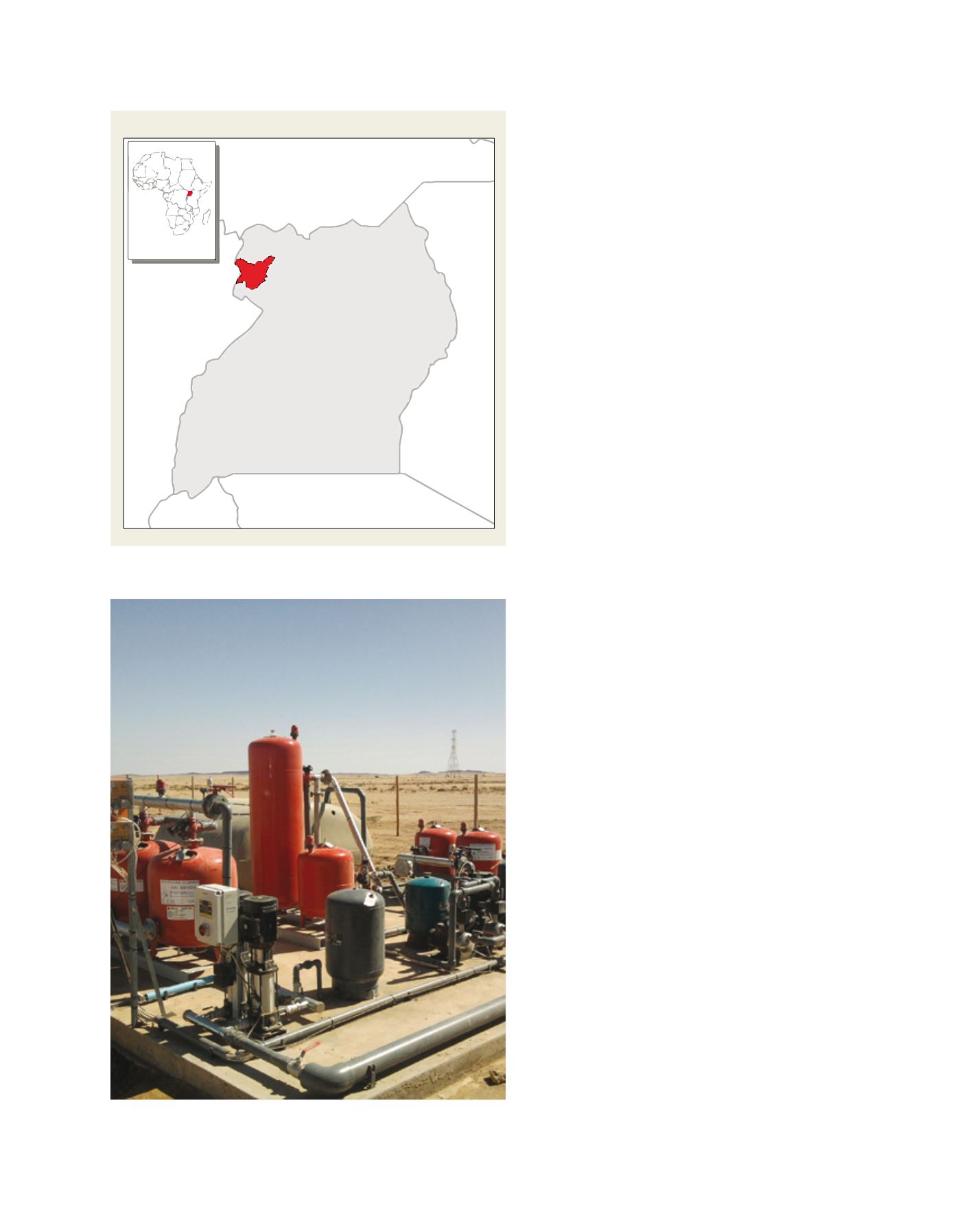

[
] 282
E
conomic
D
evelopment
and
W
ater
build infrastructure. We need a change in mindset
about wastewater; we should stop viewing it as
waste and a burden, but rather see it as a resource
that could be effectively utilized to augment water
sources. And building a decentralized system for
wastewater recycling, using innovative options such
as the Decentralized Wastewater Treatment System
6
and Soil Aquifer Treatment, can both improve
sanitation and generate additional water sources.
Decentralized systems allow water to be used and
reused closer to where it is produced and where
it is needed. Decentralized systems can also lower
energy demand and reduce operational and mainte-
nance costs, making them especially well suited to
conditions in sub-Saharan Africa. In addition, the
decentralized treatment options and the resulting
clusters optimize the adaptive capacity of the emerg-
ing urban space by allowing infrastructure growth
to be staged in a way that traces the urban growth
trajectory more carefully. The IUWM strategy also
promotes the development of a strong watershed
protection plan where the needs and wishes of all
upstream and downstream stakeholders in the water-
shed are considered.
It is possible that this IUWM strategy could provide
sufficient water resources to meet the increasing
demand in the next 20 years. Allocation of the differ-
ent water resources is prioritized from a cost-benefit
perspective. The feasibility study estimates that for
Arua, the average unit costs for the proposed IUWM
scenario are US$0.57 per cubic metre, while the unit
costs for the traditional approach of using water from
conventional surface water sources 20 km away is
US$0.74 per cubic metre.
A unique opportunity
In conclusion, we need to recognize that global change
pressures will affect our ability to manage urban water
in the city of the future. We all live, and our cities
exist, in a rapidly changing environment. The think-
ing behind much urban planning today predates these
changes and the time has come to think fresh! We
cannot continue investing in water infrastructure that
is unsuited to future societal needs. At the same time
we have to find new ways of catering for more people,
with more needs, with the same quantity of water. All
this has to be achieved while reducing our ecological
footprints. This complicated challenge calls for a real
paradigm shift in urban water management. In emerg-
ing urban areas in Africa where water infrastructure
is still in its infancy, there is a unique but fleeting
opportunity to implement radically different urban
water systems based on the principles of IUWM. The
conclusion from the Arua case study is that IUWM
is a powerful approach to managing freshwater and
wastewater (and stormwater), and provides the poten-
tial to satisfy the water needs of communities at the
lowest cost while minimizing adverse environmental
and social impacts.
Emerging technologies that maximize opportunities for water reuse
and recycling from used water
Image:Aqua Services and Engineering, 2013
The geographic location of Arua town, Uganda
Source: Vairavamoorthy et al, 2012
Congo, DRC
Rwanda
Tanzania
Kenya
Sudan
Uganda
ARUA


















